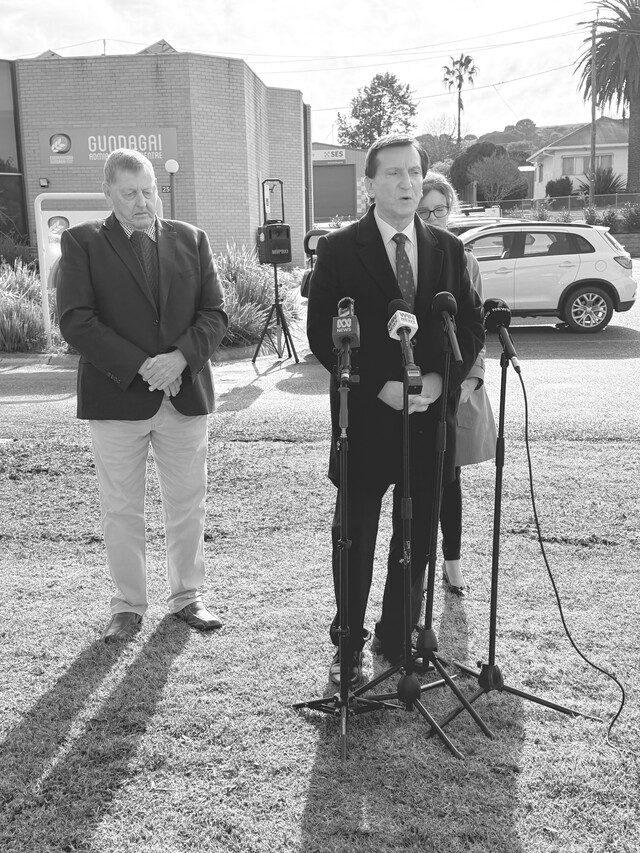Mention environmental management to Local Government managers, who are struggling to find the money to maintain their roads and provide other basic services, and they can age visibly. ‘It may be important, but we just don’t have the resources’, is a common reaction. However, what many Councils are now realising is that there are various innovative ways to improve the environment on a small budget and these improvements can save money.
This was the case with Wollondilly Shire Council in NSW which discovered that the unexpected benefit of revegetating their roadside reserves was their road maintenance bills dropped. Armidale Dumaresq Council, also in NSW, found that using roadside construction techniques that minimised damage to the environment actually resulted in reduced construction costs.
Other financial benefits included the reduced need to return to these sites to repair problems caused by erosion, weed invasion or high salt levels. The necessity for Local Government to manage land in a sustainable way is becoming an inescapable fact.
Throughout Australia there is increasing evidence that environmental problems are affecting the economic viability of whole communities. Local Government often has had to bear the major cost of repairing land degradation and the impacts on infrastructure. Prevention of problems is undoubtedly much cheaper than solving them.
This has led many Councils that operate within tight budgets to find new ways to conserve their local environment through developing and supporting partnerships with private landholders, community groups, regional organisations, industry and state agencies.
Community Partnerships
Forming partnerships with groups, such as Greening Australia and Landcare, local schools, community groups, other Local Governments, catchment and regional authorities and State agencies, is one way to undertake significant conservation projects on a small budget.
Partnerships allow resources to be pooled and are a way of involving the local community in caring for their environment. Partnerships also significantly improve the chance of gaining funding through grant programs under the Commonwealth Government’s Natural Heritage Trust.
One example is the range of worthwhile projects, on both public and private land, that has been undertaken in the Wingecarribee Shire through some highly successful partnerships. The Shire actively encourages community partnerships in its conservation work and community groups manage many of the Council’s bushland reserves.
Council also forms partnerships with a range of interest groups, including Landcare and Catchment Management Committees. The Department of Land and Water, National Parks and Wildlife Service, local schools, Telstra, Integral Energy and many others have also worked cooperatively with Wingecarribee Council on various environment projects.
The Shire of Hindmarsh in Victoria has also discovered the value of partnerships. The Council is a key player in a project that is creating a network of vegetation corridors to link the Big Desert and Little Desert National Parks.
The project is being undertaken by a group of organisations, including Greening Australia, the Landcare Network, the Shire of West Wimmera and Hindmarsh Shire. They are working together to revegetate cleared areas on Shire roads to recreate the original vegetation of the area.
In 1999, over 300,000 trees were planted, many by volunteers from the local area, Melbourne and Adelaide. The project has also received extensive support from the Natural Heritage Trust (Bushcare), Ace Radio, VicRoads and BP, which has minimised the cost to the Council.
Encouraging community involvement
Much of Australia is privately owned. Encouraging private landholders to become partners in conserving the environment and local biodiversity as part of sustainable farm management is an effective way for Local Government to improve their Shire’s environment.
Offering conservation incentives is one way to motivate landholders. The initial development and implementation of incentive schemes can be undertaken at a low cost, particularly with assistance from grant programs, such as Bushcare under the Natural Heritage Trust.
There are various successful conservation incentives that range from rate rebate schemes to providing landholders with training and technical information to help them integrate conservation into a whole farm plan; establishing local awards and community recognition; providing plants or seed propagation equipment and assisting in weed control.
Grants
Councils can provide grants to landholders or community groups for conservation activities, such as fencing, to protect remnant vegetation or rehabilitation of wildlife habitat. Grants can also be linked to management agreements or ongoing rate relief.
In the Coorong District Council in south-east South Australia, incentive payments are offered to individuals or groups who are protecting or enhancing native vegetation and wetlands. They fund activities such as planting deep rooted perennial vegetation to control dryland recharge, protecting remnant vegetation and reclaiming salt affected land.
Through this program, over 6,500 hectares of native vegetation and wetlands have been protected and some 379 hectares have been revegetated. The project costs, estimated at $600,000 – $700,000 a year, are being met through National Heritage Trust funding.
Rate rebates
Rate rebates provide landowners with a discount or exemption from rates on land that is managed for conservation. In return, landholders agree to maintain the land and conserve remnant vegetation. This has been successful in the Shire of Hindmarsh where rate rebates are offered to landholders entering conservation covenants or management agreements for land with conservation value.
Transferable/tradable development rights
As an incentive, Council can negotiate with a developer/landholder to either forego development of a site that has important conservation values, or place conditions on its use or management in exchange for concessions on developing the remainder of the site or land elsewhere. This can include rezoning.
This has been highly effective in the Johnstone Shire in North Queensland, which introduced the innovative concept of a Rural Conservation Zone. The Conservation Zone includes land that contains wildlife habitat or that can be revegetated to create a habitat corridor.
While no attempt is made to restrict agricultural practices in Rural Conservation Zones, landholders do have the option of participating in a ‘Bonus Development Rights’ scheme.
This scheme gives landholders a range of benefits, such as relaxed minimum area requirements for subdivision or the ability to undertake projects, like developing tourist accommodation, that is not normally favoured on rural lands, in exchange for voluntarily rezoning land so that it is legally protected from clearing. The cost to Local Government is staff time for administration and habitat assessment, on costs and fuel costs.
Free Incentives Guide for Local Government
Local Government does have a crucial role to play in protecting Australia’s environment and our biodiversity. In recognition of this, a free guide for Local Government called Incentives for Sustainable Land Management will be published in May by Environment Australia.
The guide is designed to help Councils work with local communities and landholders to develop, implement and monitor the success of financial incentive conservation schemes.
It provides a step by step approach for Councils and their staff to develop and implement local financial incentives programs, and encourage people who are interested in making a real difference by conserving biodiversity on their land.
The guide will be available free of charge from the Community Education Unit in Environment Australia by calling 1800 803 772







